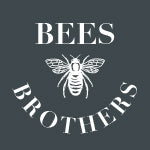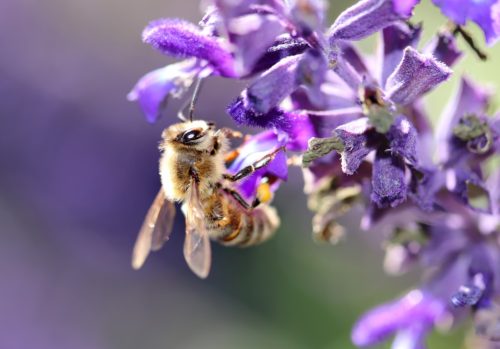Promoting bee pollination is essential for the health of ecosystems and agriculture. In the Intermountain West region, which includes states like Utah, Idaho, Nevada, and parts of surrounding states, you can choose a variety of flowers that are well-suited for bee pollination. Here are some flower options that are generally well-suited for this region:
 Lavender (Lavandula): Lavender produces fragrant and nectar-rich flowers that are highly attractive to bees. It’s a perennial plant that can thrive in the Intermountain West’s climate.
Lavender (Lavandula): Lavender produces fragrant and nectar-rich flowers that are highly attractive to bees. It’s a perennial plant that can thrive in the Intermountain West’s climate.
Bee Balm (Monarda): Bee balm, also known as wild bergamot, features vibrant flowers in shades of pink, red, or purple. Bees are drawn to its nectar-rich blossoms.
Penstemon (Penstemon): With its tubular flowers, penstemon is particularly well-suited for native bees. There are many species and varieties available, offering a range of colors.
Sunflowers (Helianthus): Sunflowers are not only attractive to bees but also add a cheerful touch to gardens. Their large, open flower heads make it easy for bees to access nectar and pollen.
Goldenrod (Solidago): Goldenrod blooms in late summer and fall, providing bees with a crucial source of food as they prepare for winter. It’s a hardy perennial that can tolerate various soil types.
Coneflowers (Echinacea): These daisy-like flowers come in a range of colors and are beloved by both bees and butterflies.
Russian Sage (Perovskia atriplicifolia): Russian sage produces tall spikes of lavender-blue flowers that are not only attractive to bees but also add a lovely texture to your garden.
Salvia (Salvia): Salvias come in many varieties, including ones with tall spikes of colorful flowers. They are highly attractive to both bees and hummingbirds.
Catmint (Nepeta): Catmint produces spikes of small, tubular flowers that are adored by bees. It’s a low-maintenance plant that can thrive in various conditions.
Milkweed (Asclepias): While its main importance lies in supporting monarch butterflies, milkweed also attracts bees with its fragrant and nectar-rich flowers.
Remember, the key to supporting bee populations is to provide a variety of flowers that bloom at different times throughout the growing season. This ensures a consistent food source for bees from spring to fall. Additionally, prioritize native plants, as they often have a co-evolutionary history with local bee species, making them particularly beneficial.
Before planting, it’s a good idea to research the specific flowers that are native to your area within the Intermountain West, as local conditions can vary. You can also consult with local gardening clubs, nurseries, or agricultural extension services for tailored advice on selecting the best flowers for bee pollination in your specific location.

